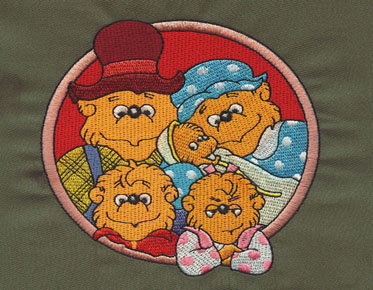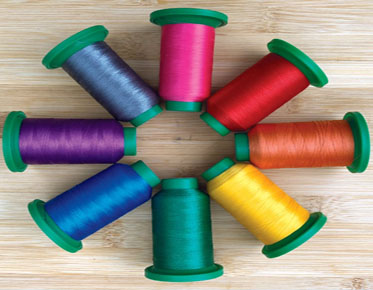The Different Types of Fabric Used in Digitizing Embroidery
Embroidery of digitized images has become more popular with professionals as screen-printed T-shirts. This medium, however, requires a familiarity with terms such as fabric grip and knitted stretch, as opposed to their less restrictive counterparts. But once you understand these concepts, your embroidery digitizing can be stitched onto a wide range of fabrics that will stand out from the rest!
It is important to understand how various fabrics perform in different embroidery projects. A good understanding of the function and application of embroidery pieces is also valuable. There are many factors to consider when choosing the right fabric for your job.
Which fabric properties should be considered?
When choosing fabrics for your embroidery project, you should consider the following:
* Fabric Construction - Learn how fabrics
are "built". You should have a good feel for the density, thickness,
weight and weave of the fabric.
* Fabric Properties - Understand how the
fibers of a fabric are constructed and will respond to stretching, needling,
ironing, washing, and more. It would help if you also looked into color fastness,
shrinkage and elasticity.
*100% DESIGN - Not all fabrics are
available in every design.
*CUT - The fabric on hats, clothes, bags
and accessories will be treated very differently than napkins or linens.
What are the 3 main fabrics used for embroidery?
When it comes to embroidery design, there are 3 main categories depending on how certain fabrics are constructed:* Nonwoven - Felt
*100% Woven Fabrics - Cotton, Linen, Silk,
Wool, Tweed, Denim and Polyester
*100% Knitted Fabrics - Yarn, Jersey, Spandex and French Terry
Embroidered non-woven fabric
Nonwovens typically use acrylic and wool to make felt. These nonwovens have layered and fused small fibers. The process then bonds mechanically, chemically or thermally.
Once the non-woven fabric is made, there is no space between the individual fibers; thus making the fabric thicker and denser. Due to this process, the felt needs to be well embroidered, but due to the rigidity of the fabric, there is no drape. Depending on how the fiber is used, it may also pill. This pilling process occurs when fibers of different lengths begin to separate from each other. Then there are small fiber balls that are placed on top of the fabric. It has limited use in embroidery, but it does work well.
Why is it so important to understand the difference between knitted and woven fabrics in embroidery?
It is important to know the thread (yarn) arrangement as they will have different properties. They act in different ways under various stressors. Note the following differences:
* Stretch Factor - Most knitted fabrics
will be stretchy because there will be more space between each yarn in the
loop. Woven fabrics will not be elastic unless their fibers have elastic
qualities during composition.
* Stress Response - The base of the loop
(stitch) in knitted fabrics usually consists of a single thread. In woven
fabrics, there are two threads. A single-threaded base will not provide as much
stability in the fabric as a two-threaded base. This becomes important when the
wrong type of needle is used for these knitwear. If the needle goes through the
yarn of the knitted fabric, it can cause the fabric to break.
* 100% Wrinkle Reaction - Knits don't
wrinkle quickly, woven fabrics crease easily. This will become an important
factor when considering design and thread selection.
*Shrinkage - Knitted fabrics tend to shrink more than woven fabrics. That's why choosing a fabric from the knitwear category requires it to be pre-shrunk before work.
Embroidered woven fabric
Woven fabrics are made from small fibers that are spun into yarn and then woven into your fabric. Depending on the fiber and aesthetics, this yarn can have a loose twist or a tight twist. This structure is important because it will indicate how much movement is in the fabric and will affect your embroidery work. The way the yarn is woven will create a different weave. It will also indicate how much space is left between the yarns. The larger the space, the more the fabric moves while embroidering. A tighter weave will provide less movement.
When dealing with heavier fabrics, the
density of the fabric is often taken into account, as their thread count does
not explain the characteristics of the fabric very well. Density will determine
the firmness and thickness of a certain fabric. These characteristics will come
into play when choosing a hoop groove method, stabilizer type, design, etc.
Embroidered knitted fabric
Knitted fabrics will have many of the same properties as woven fabrics; however, knitted fabrics tend to be made with thicker yarns, making them heavier. The knit or stitch used, as well as the fibers themselves, will affect the elasticity of the fabric. Like woven fabrics, the elasticity of the fabric adds movement to the piece. It is not uncommon to use stabilizers to complete embroidery projects when fabrics with a lot of movement are selected.
There are many things to consider when
considering embroidery for your project. Components such as application,
design, and materials must be carefully selected to create the desired look.
Always suggest test pieces before submitting if you are not sure. Since the
variables are at play, it takes a lot of trial and error to get it just right.



